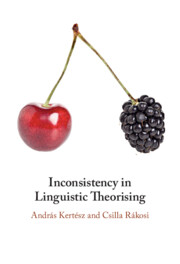Book contents
- Inconsistency in Linguistic Theorising
- Inconsistency in Linguistic Theorising
- Copyright page
- Dedication
- Contents
- Figures
- Tables
- Preface
- Abbreviations and central terms
- 1 Introduction
- Part I The State of the Art
- Part II Paraconsistency
- 4 The Paraconsistent Treatment of Inconsistency
- 5 Prospects and Limits of the Paraconsistent Treatment of Inconsistency
- Part III Plausible Argumentation
- Part IV Summary
- References
- Index
5 - Prospects and Limits of the Paraconsistent Treatment of Inconsistency
from Part II - Paraconsistency
Published online by Cambridge University Press: 23 June 2022
- Inconsistency in Linguistic Theorising
- Inconsistency in Linguistic Theorising
- Copyright page
- Dedication
- Contents
- Figures
- Tables
- Preface
- Abbreviations and central terms
- 1 Introduction
- Part I The State of the Art
- Part II Paraconsistency
- 4 The Paraconsistent Treatment of Inconsistency
- 5 Prospects and Limits of the Paraconsistent Treatment of Inconsistency
- Part III Plausible Argumentation
- Part IV Summary
- References
- Index
Summary
In , we saw that the inconsistency between the data and the hypotheses as well as that between hypotheses can be resolved by paraconsistent tools.raises the problem of how to evaluate the paraconsistent treatment of inconsistency.will be devoted to a case study exemplifying the emergence and the usefulness of paraconsistency in generative syntax. In , we will discuss another two case studies that highlight the limits of paraconsistency. Finally, in , we will draw the conclusions from the case studies that evaluate the use of paraconsistency in linguistic theorising.
- Type
- Chapter
- Information
- Inconsistency in Linguistic Theorising , pp. 110 - 128Publisher: Cambridge University PressPrint publication year: 2022

